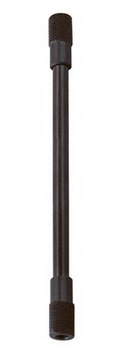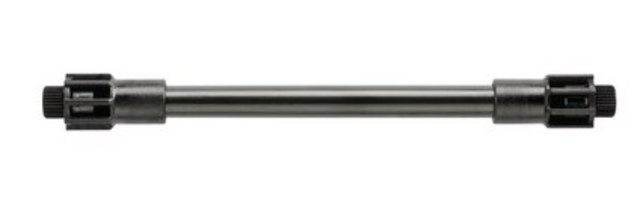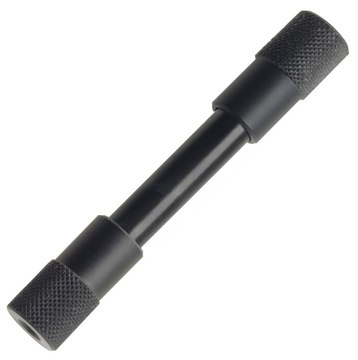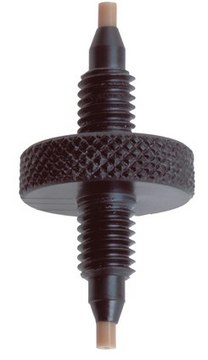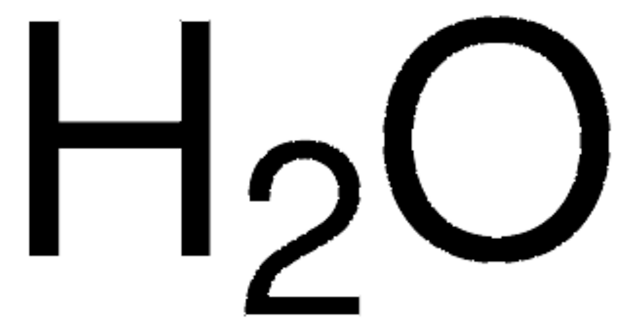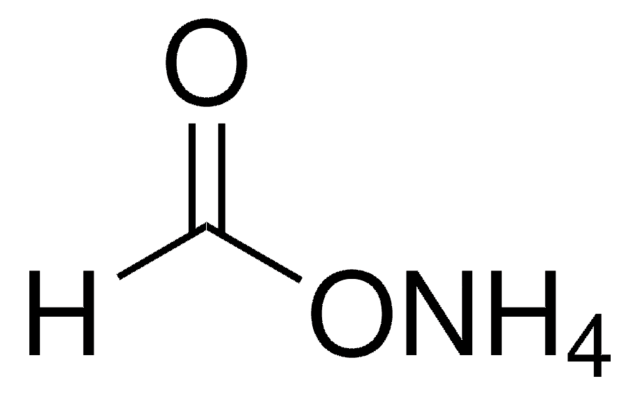推荐产品
产品名称
Chromolith® RP-18封端, L × I.D. 50 mm x 2 mm HPLC column
物料
PEEK column
质量水平
Agency
suitable for USP L1
产品线
Chromolith®
特点
endcapped
包装
1 ea of
标记范围
18% Carbon loading
参数
200 bar pressure
45 °C max. temp.
技术
LC/MS: suitable
UHPLC-MS: suitable
UHPLC: suitable
mass spectrometry (MS): suitable (High)
色谱柱长度 × 内径
5 cm × 2 mm
基质
monolithic silica
基质活性基团
C18 bonding phase
孔径
1.5 μm macroporosity
13 nm mesoporosity
工作pH范围
2-7.5
分离技术
reversed phase
储存温度
no temp limit
正在寻找类似产品? 访问 产品对比指南
一般描述
Chromolith® FastGradient RP-18 封端50-2色谱柱具有直径1.5 μm的大孔隙,色谱柱效率超过100,000块板/米。中孔为 13 nm(130 150 Å),表面修饰物为带有完整封端的十八烷基硅烷。Chromolith® FastGradient RP-18 封端50-2 色谱柱属于USP L1类。柱效率相当于3至-4μ m颗粒尺寸的全多孔颗粒柱。Chromolith®FastGradient RP-18 封端50-2 色谱柱特别适合LC-MS应用。
50 mm 长和2 mm内径的柱尺寸是以任何U/HPLC系统实现快速分离的最佳选择。
创新的整体化二氧化硅 凭借大孔和中孔的独特组合实现以下优点:
推荐的保护柱为:
带Chromolith® 保护柱芯架(套件件) 5 mm x 2 mm [1.52004]的Chromolith® RP-18 封端 5-2保护柱芯(3件) [1.52009]。
Chromolith®柱连接器可以将多根色谱柱串联起来,从而大幅提高Chromolith®柱的分离效率(最高达100,000 板/每柱)。[1.51467].
了解更多:
手册:在任何系统上都能加快您的分离。Chromolith®整体二氧化硅HPLC 柱
所有Supelco HPLC柱,包括Chromolith®柱,全面兼容所有HPLC和UHPLC 仪器。
Supelco HPLC产品:任何LC仪的最佳选择
分析说明
压力: ≤ 30 bar
性能(蒽)
理论塔板数(N/m)(蒽): ≥ 100000
容量系数(蒽):3.6 - 4.3
拖尾因子(USP):0.86 - 1.30 %
选择性
分离因子(蒽/孕酮):2.30 - 2.60
法律信息
商品
Monolithic silica HPLC columns enable high-throughput analysis at low back pressure without loss of separation efficiency or peak capacity.
相关内容
Small molecules are ions and compounds of molecular weight typically less than 900 daltons. These compounds can be effectively separated and analyzed by HPLC, UHPLC and LC-MS using mainly silica particles or monolithic stationary phases with a broad range of column chemistries (modifications).
Small molecules are ions and compounds of molecular weight typically less than 900 daltons. These compounds can be effectively separated and analyzed by HPLC, UHPLC and LC-MS using mainly silica particles or monolithic stationary phases with a broad range of column chemistries (modifications).
小分子特指低分子量化合物(通常小于900道尔顿),分离小分子方法包括高效液相色谱(HPLC)、液相(LC)、气相(GC)、薄层色谱(TLC) 和毛细管电泳(CE)。此外,还可通过磁共振波谱法(NMR)或 质谱法(MS)等方法鉴定小分子。
我们的科学家团队拥有各种研究领域经验,包括生命科学、材料科学、化学合成、色谱、分析及许多其他领域.
联系技术服务部门